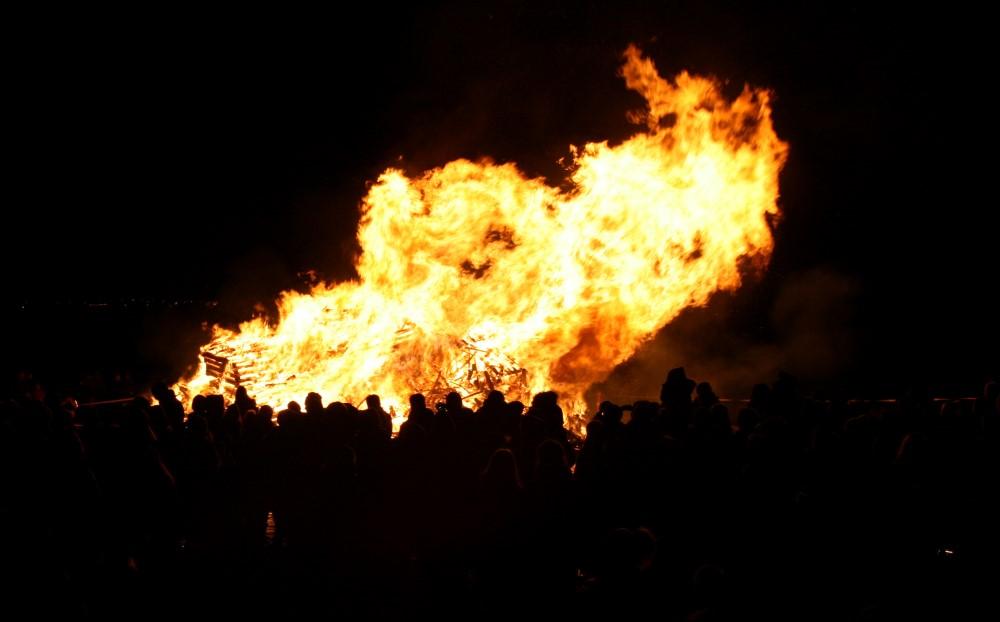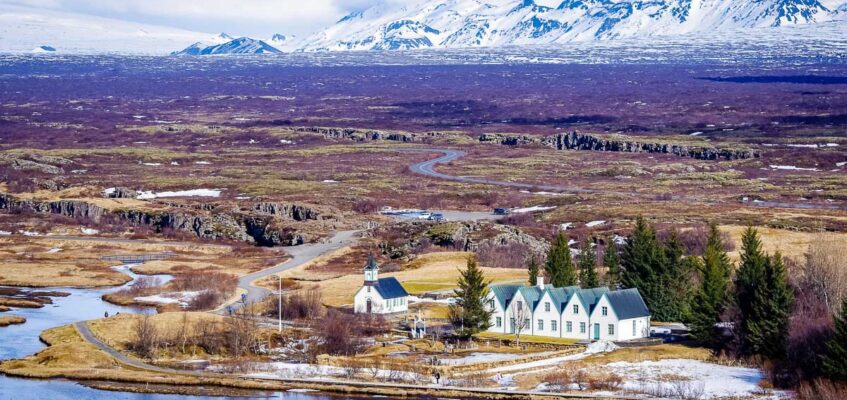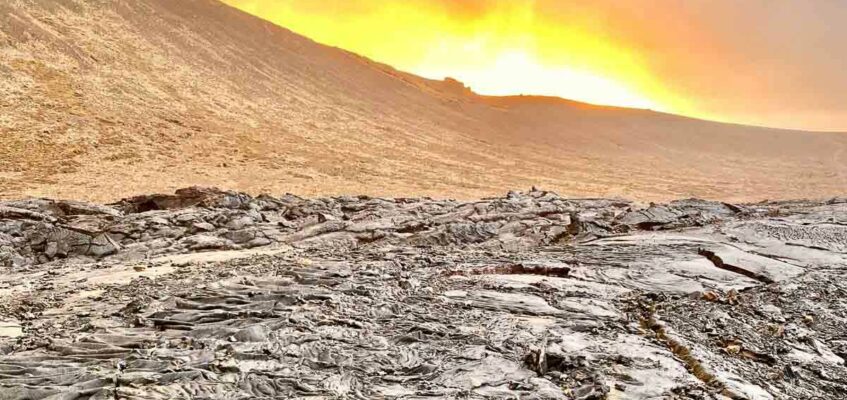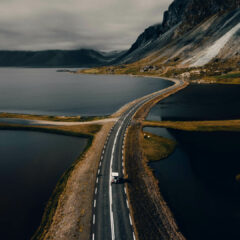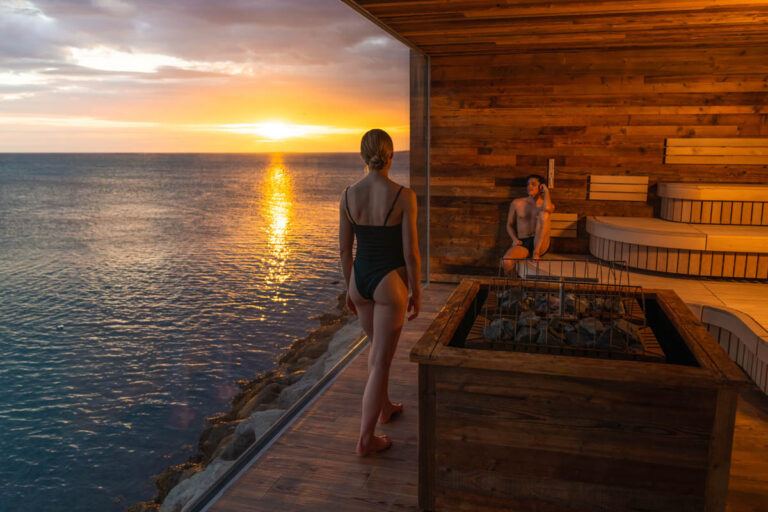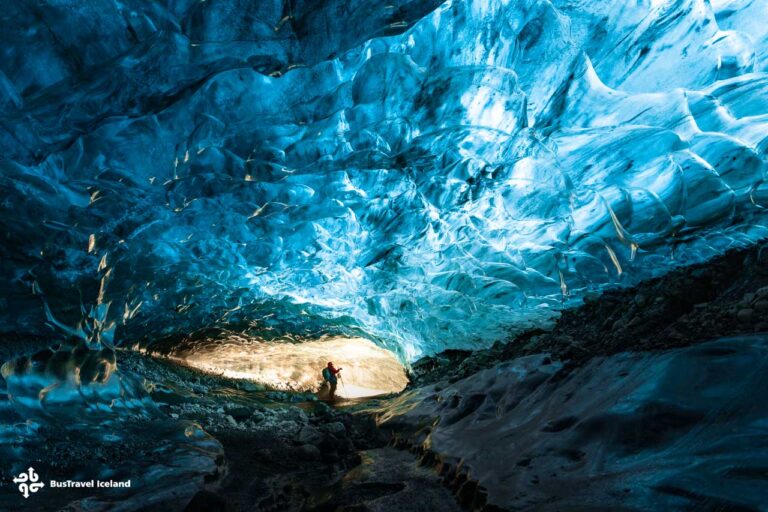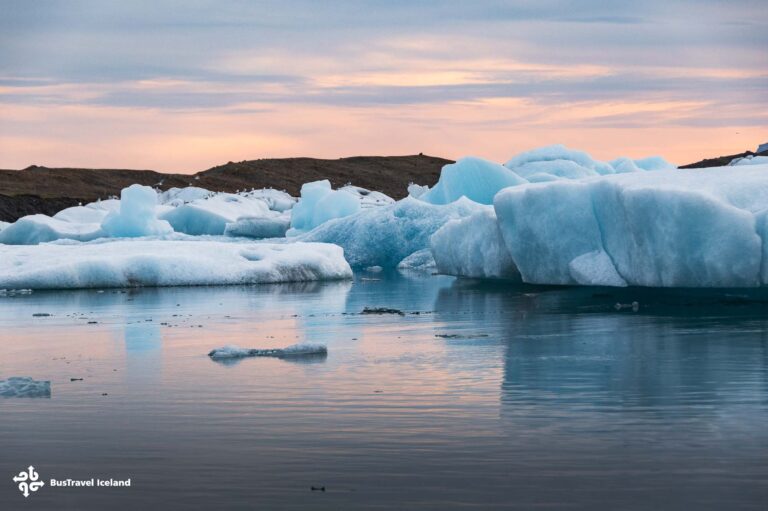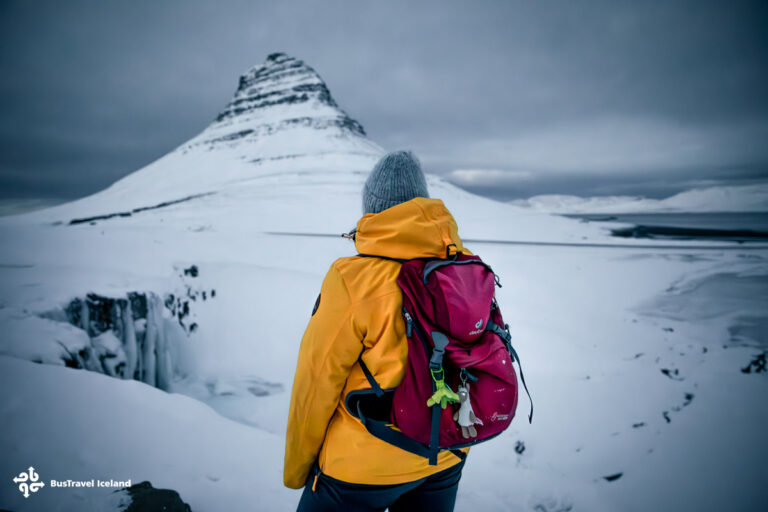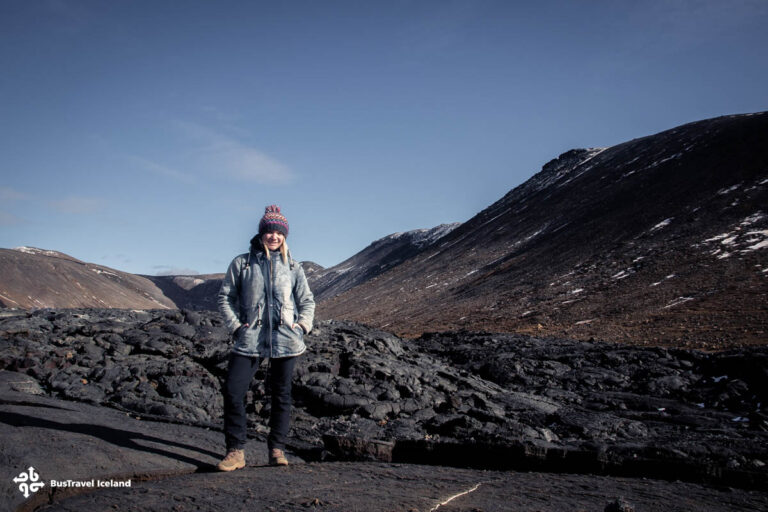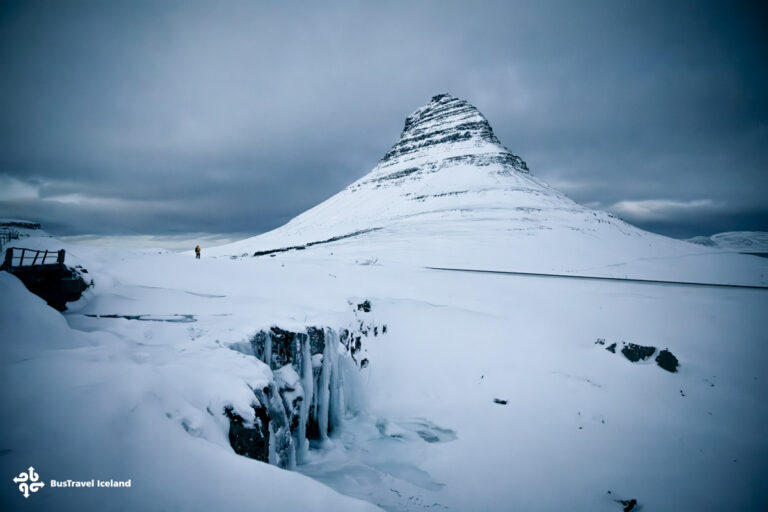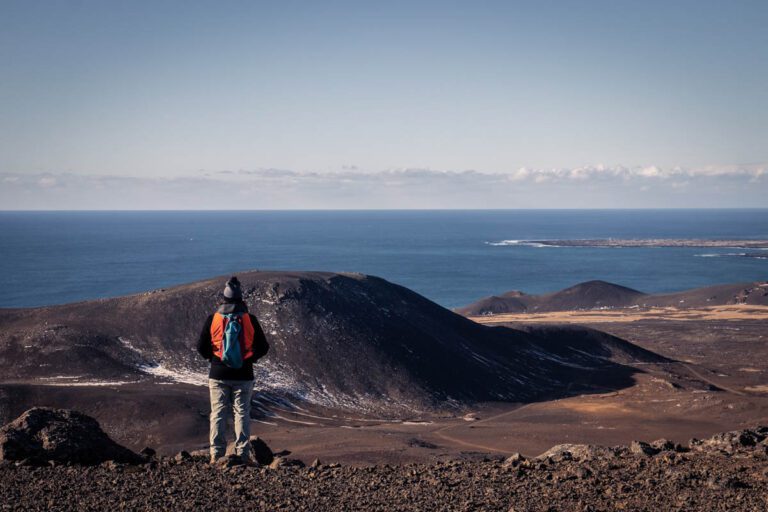Exploring Christmas in Iceland: A Holiday Guide
- Iceland Culture
- 24 Nov 2025
Christmas in Iceland feels like stepping inside a living fairytale—where Yule Lads roam the mountains, twinkling lights warm the long winter nights, and ancient folklore blends with modern Nordic traditions. From Reykjavík’s festive streets to the quiet magic of the countryside, Iceland celebrates the season with a depth and charm unlike anywhere else. This guide explores the food, rituals, landscapes, and experiences that make spending Christmas in Iceland an unforgettable journey into culture, light, and winter adventure.

Christmas in Iceland is one of the most atmospheric holiday experiences in the world, where ancient folklore, glowing city lights, and dramatic winter landscapes create a season unlike any other. Travelers visiting Iceland in December encounter a mix of centuries-old traditions, unique Christmas foods, and spectacular natural scenery—from snowy fjords to the Northern Lights.

Christmas in Iceland is a season, not a Day
Icelanders don’t ease into Christmas; they build toward it with ritualistic precision. The season unofficially begins on December 1, but its true rhythm stretches across 13 nights leading up to Christmas, when the Jólasveinar—the 13 Yule Lads—descend from their mountain homes one by one.
Children place shoes in their windows at night and wake to gifts—sometimes sweets, sometimes potatoes if they’ve misbehaved. The Yule Lads aren’t gentle, porcelain cherubs but mischievous personalities with names like Spoon-Licker, Door-Slammer, and Sausage-Swiper, reflecting a culture that has long embraced humor as a survival strategy, a bright spark in the perpetual twilight.
Each Yule Lad has a distinct personality and arrives on a specific night:
After the final Yule Lad arrives on December 24, attention turns to family, church services, and festive meals. The Icelandic Christmas season officially concludes on January 6, Þrettándinn (Twelfth Night / Epiphany), often celebrated with bonfires, songs, and the last echoes of Icelandic holiday magic.
Their mother, the ogress Grýla, is a far darker presence—roaming the snowy highlands in search of naughty children to cook in her cauldron. Her legendary companion, Yule cat, the Iceland Christmas Cat, or Jólakötturinn, prowls the countryside hunting anyone who hasn’t received new clothes for the holiday. Today, this tale has evolved into a playful tradition that encourages charitable giving and community care. In Iceland, even the monsters have a lesson to teach, blending mischief with festive folklore.
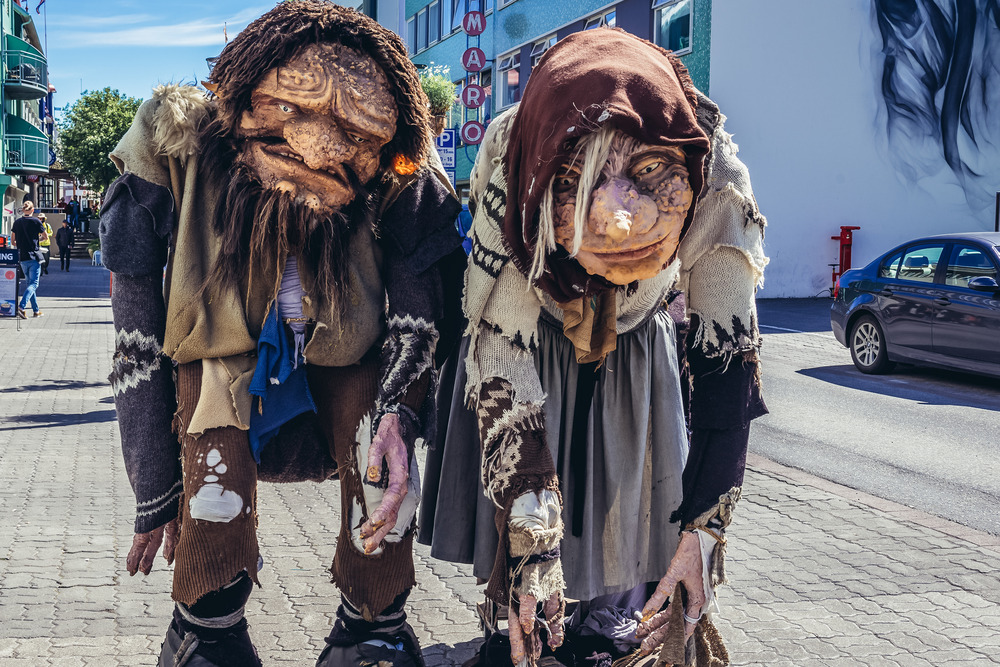
| Date | Yule Lad |
| Dec 12 | Stekkjastaur (Sheep-Cote Clod) |
| Dec 13 | Giljagaur (Gully Gawk) |
| Dec 14 | Stúfur (Stubby) |
| Dec 15 | Þvörusleikir (Spoon-Licker) |
| Dec 16 | Pottasleikir (Pot-Licker) |
| Dec 17 | Askasleikir (Bowl-Licker) |
| Dec 18 | Hurðaskellir (Door-Slammer) |
| Dec 19 | Skyrgámur (Skyr-Gobbler) |
| Dec 20 | Bjúgnakrækir (Sausage-Swiper) |
| Dec 21 | Gluggagægir (Window-Peeper) |
| Dec 22 | Gáttaþefur (Doorway Sniffer) |
| Dec 23 | Ketkrókur (Meat-Hook) |
| Dec 24 | Kertasníkir (Candle-Stealer) |
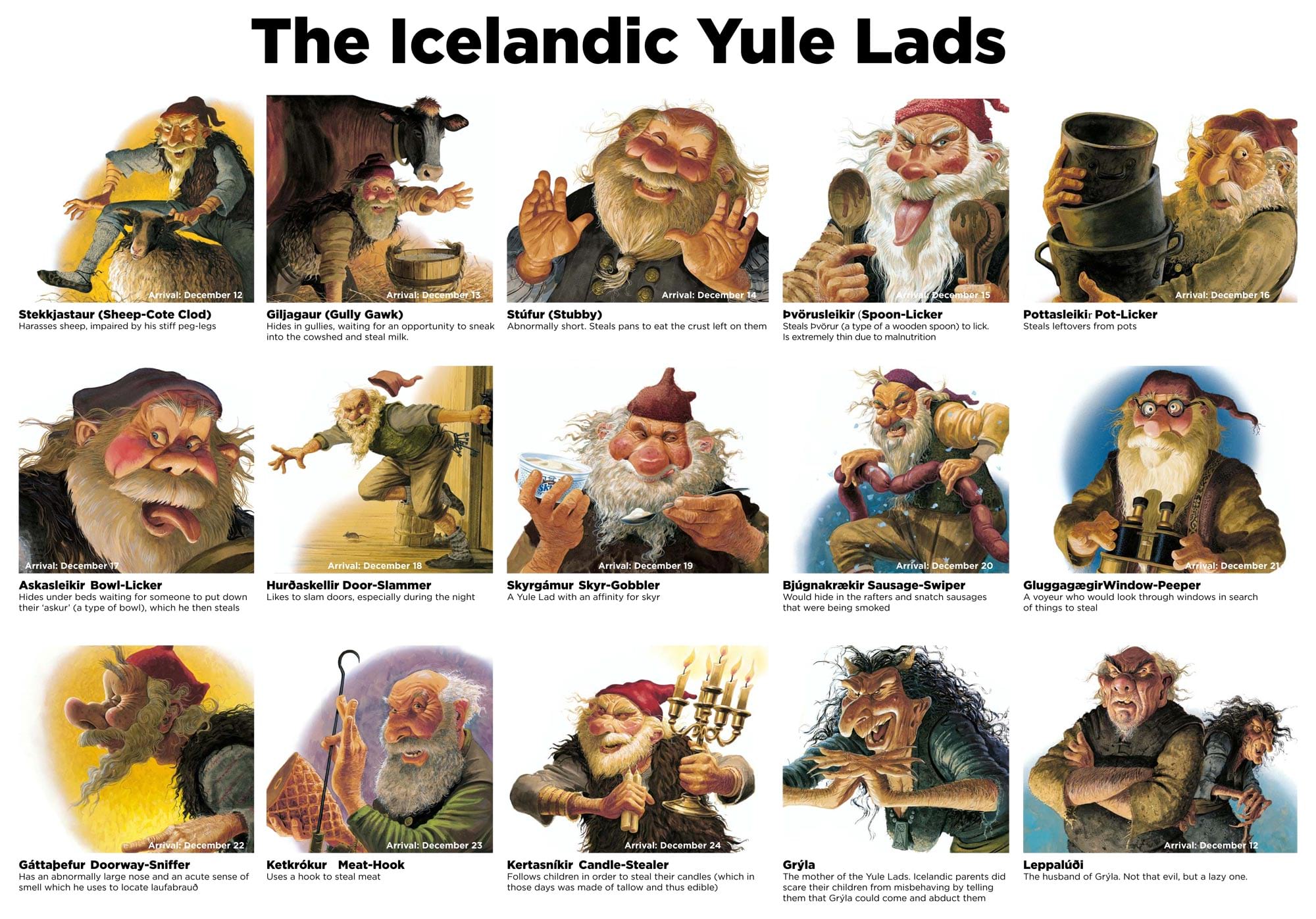
The Light in the Dark
With only four hours of daylight in late December in Iceland, Christmas here is a celebration of illumination. Towns and villages cloak themselves in warm, golden lights long before the solstice. Windows glow with advent candles, often arranged in deep red or white, casting silhouettes of families gathering for evening coffee.
In Reykjavík, strings of lights drape the harbor and the glassy concert hall, Harpa, pulses softly like a lantern set against the Arctic night. Even remote hamlets—small clusters of houses huddled between fjords and mountains—shine with quiet dignity. For many Icelanders, this is the true spirit of the season: a collective softening of the dark.
Reykjavík becomes especially beautiful during December. Key sights include:
- Laugavegur: The main shopping street, decorated with glowing lights and Christmas trees
- Harpa Concert Hall: Illuminated with shifting colors
- Hallgrímskirkja: Towering over the city with festive lighting
- Iceland Christmas Markets: The Hljómskálagarðurinn market and the Hjartagarðurinn market offer crafts, food, and live music
Because Iceland has only about four hours of daylight during the winter solstice, lighting is central to the holiday atmosphere.

Iceland Christmas Tradition
The flavors of Christmas in Iceland traditions carve a direct path into the country’s past. Shops fill with laufabrauð, a delicate, paper-thin bread intricately carved with patterns before frying. Families gather around kitchen tables to cut the designs—snowflakes, geometric braids, stylized flowers—with the decorative precision of lace-makers.
Then there are the acquired tastes: fermented skate, served on December 23, filling the streets with an unmistakable ammonia-like aroma that some consider a festive perfume and others a challenge to endurance. More universally beloved is hangikjöt, smoked lamb whose flavor reveals Iceland’s centuries-old reliance on preservation. Modern tables also feature glazed ham, roasted ptarmigan, and a variety of festive cookies known simply as smákökur, which every household seems to hold a personal pride in perfecting.
Visitors experiencing Christmas in Reykjavík, Iceland can see these Christmas holiday traditions in Iceland come to life, offering a unique window into Christmas traditions in Iceland that blend centuries-old customs with modern holiday celebrations.
Food is essential to Christmas celebrations in Iceland. Popular dishes include:
- Laufabrauð: Thin, decorative fried bread
- Hangikjöt: Smoked lamb served with potatoes and white sauce
- Fermented skate: Traditionally eaten on December 23 (Þorláksmessa)
- Smákökur: Homemade Christmas cookies
- Glazed ham, roasted ptarmigan, and modern additions to the holiday table
Restaurants across Reykjavík offer special Christmas menus from late November through December.
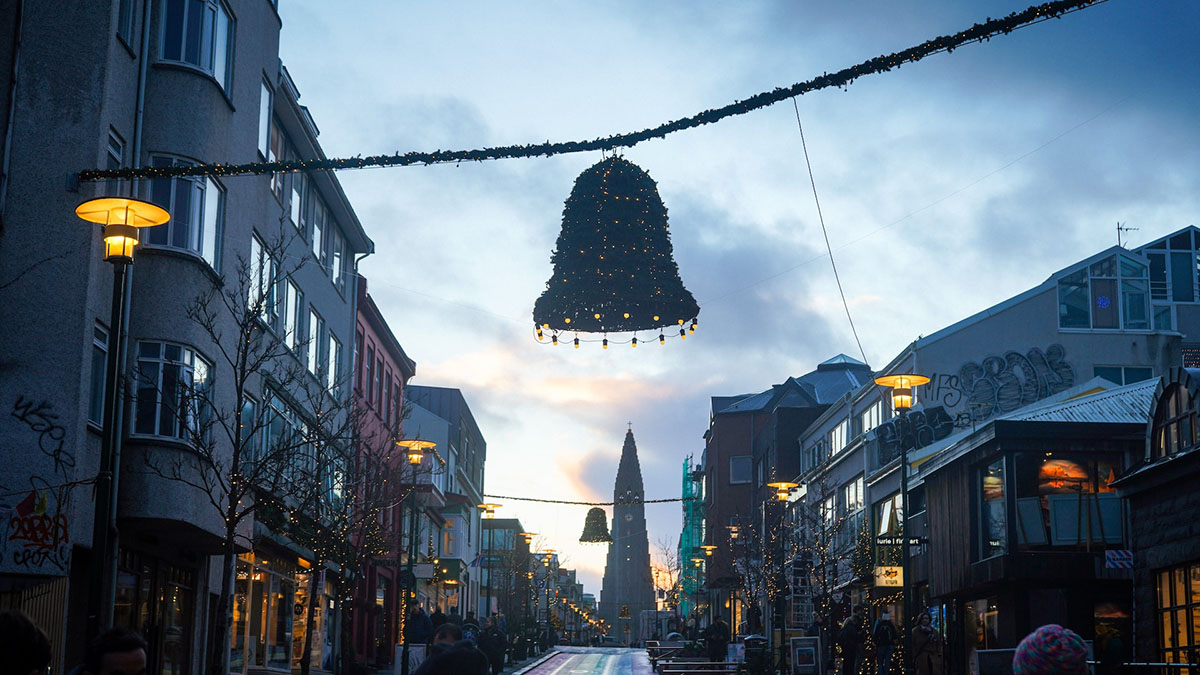
Þorláksmessa: The Icelandic Eve Before the Christmas Eve
December 23 is a uniquely Icelandic affair. On Þorláksmessa, named for the country’s patron saint, streets brim with last-minute shoppers spilling out of Reykjavík’s Laugavegur. Friends bundle up to stroll and meet for warm drinks. Families gather for the aforementioned fermented skate, though restaurants increasingly offer more approachable versions.
It’s a night of bustle and anticipation—a cultural exhale before Christmas Eve, the true moment of celebration.
Iceland Christmas Eve Traditions: The Heart of the Holiday
At 6 p.m. on December 24, church bells ring across Iceland. The precise hour matters; it marks the official start of Christmas and most households begin dinner promptly then. Families dress in their finest clothes, light candles, and open presents after the meal.
The atmosphere is reverent, but not solemn. It’s domestic, intimate, and deeply rooted in the Icelandic values of kinship and calm. Outdoor fireworks crackle into the night—an early prelude to the explosive spectacle that New Year’s will bring.
A Country-Wide Pause
The days from December 25 to 27 form a rare quiet in Iceland’s otherwise hyper-modern rhythm. Shops close. Roads empty. Families visit one another or roam the winter landscapes: geothermal pools steaming beneath a low sun, icy waterfalls, black sand beaches dusted with snow. It is a pause that feels almost sacred—an unhurried embrace between land and people.

The New Year: Fire and Frenzy
If Christmas is intimate, Icelandic New Year is its opposite: communal, raucous, mythic.
Bonfires—áramótabrennur—dot the country, their flames roaring against the dark as neighbors gather to share mulled drinks and swap stories. Fireworks, sold by search-and-rescue teams as a fundraiser, ignite the sky in anarchic brilliance around midnight. It is chaos and beauty in equal measure, a Viking echo reframed as civic celebration.
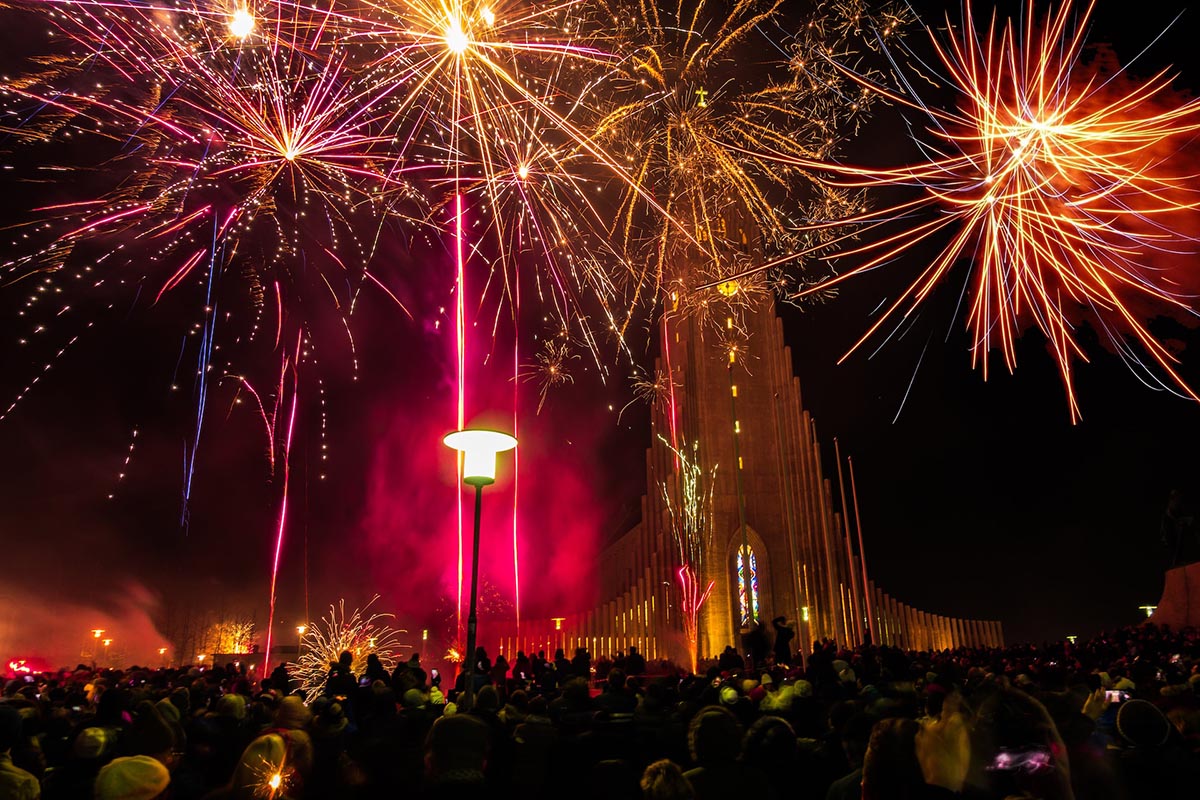
Jólabókaflóðið: Iceland’s Christmas Book Flood
No exploration of Christmas in Iceland is complete without understanding Jólabókaflóðið, the “Christmas Book Flood.” This uniquely Christmas eve tradition in Iceland reflects the nation’s deep literary culture and its long-standing love of reading. Beginning in the 1940s, when imported gifts were scarce but paper was affordable, Icelanders embraced books as the quintessential Christmas present. Today, the tradition continues in full force: every autumn, publishers release hundreds of new titles, and the highly anticipated Bókatíðindi—a catalog of nearly all books published in Iceland that year—arrives in every household, marking the unofficial start of the holiday reading season.
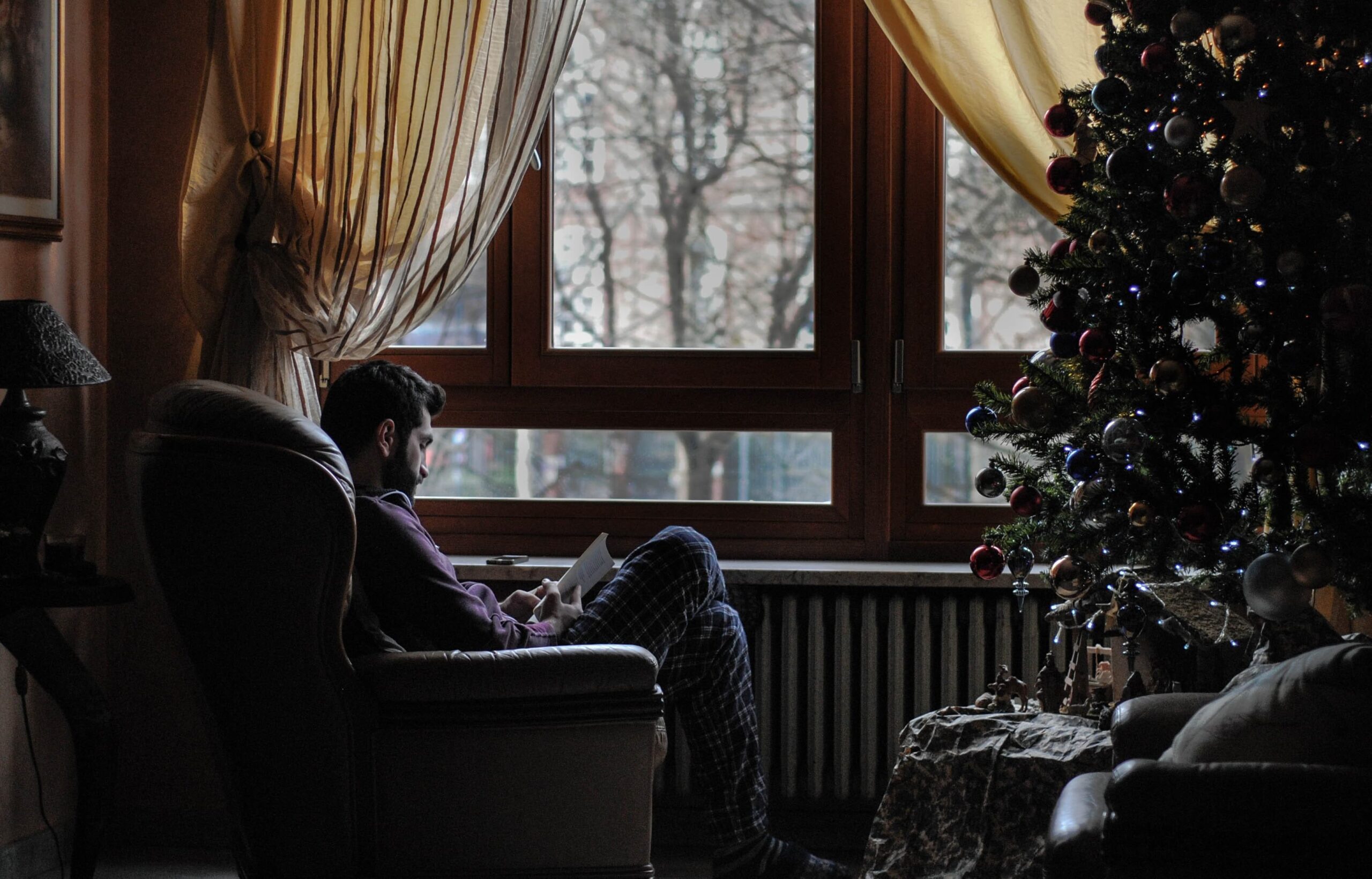
On Christmas Eve, families exchange books and spend the night reading together, often accompanied by hot chocolate or jólabjór (Christmas beer). Fireplaces crackle, pages turn, and homes fall into a peaceful hush—a sharp contrast to the bustle of Christmas shopping in other countries. For visitors, the Christmas Book Flood offers a glimpse into the soul of Iceland: a nation that treasures stories, values quiet shared moments, and sees literature as a source of warmth in the deep midwinter darkness. Experiencing Jólabókaflóðið firsthand is one of the most intimate and memorable ways to connect with Icelandic culture during the holidays.
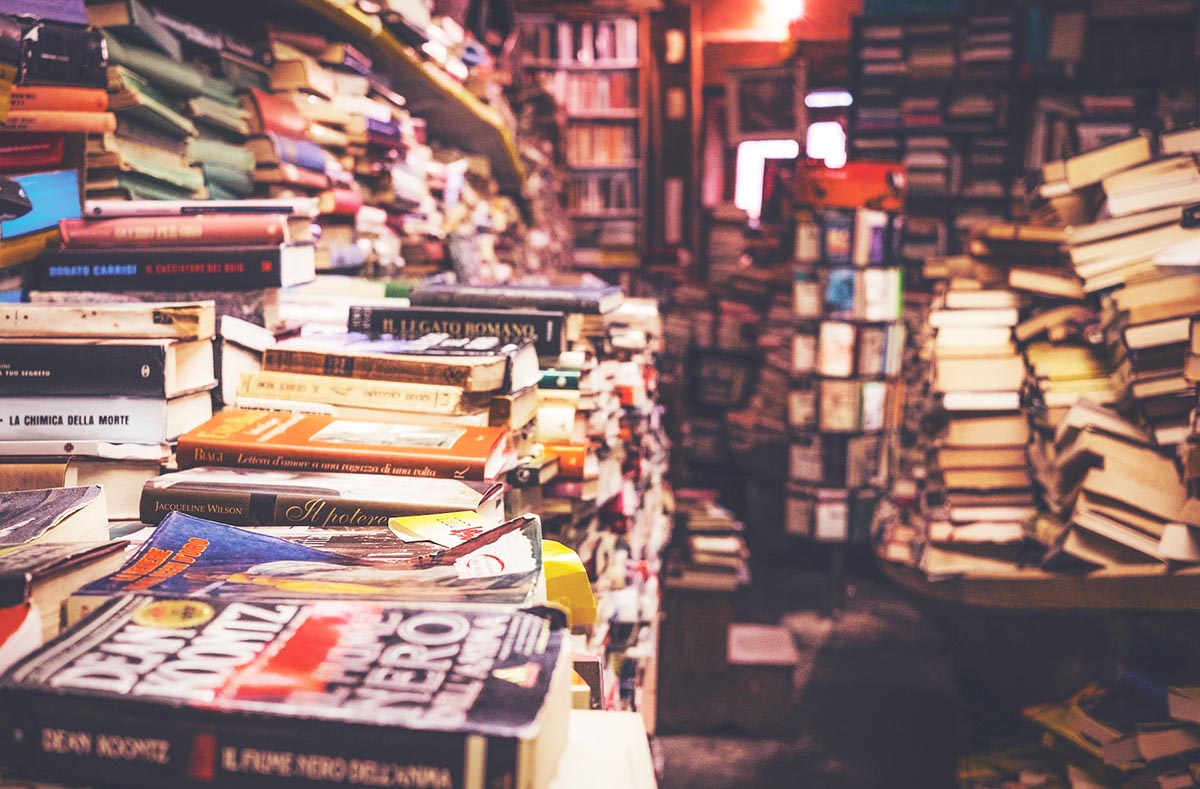
Why Iceland’s Christmas Feels Different
Christmas in Iceland is unlike the holiday anywhere else in the world. What makes it so unique is the blend of centuries-old folklore, modern Icelandic traditions, and the dramatic beauty of the country’s Arctic winter landscapes. Here, pagan legends coexist seamlessly with Christian celebrations; minimalist Nordic design stands beside time-honored customs; and the cold, dark days of December are softened by warm candlelight, festive food, and the glow of Christmas lights across Reykjavík. Experiencing Christmas in Iceland feels like stepping inside a living story—one filled with Yule Lads, handcrafted holiday dishes, quiet snowy streets, and cultural traditions that shape the rhythm of daily life.
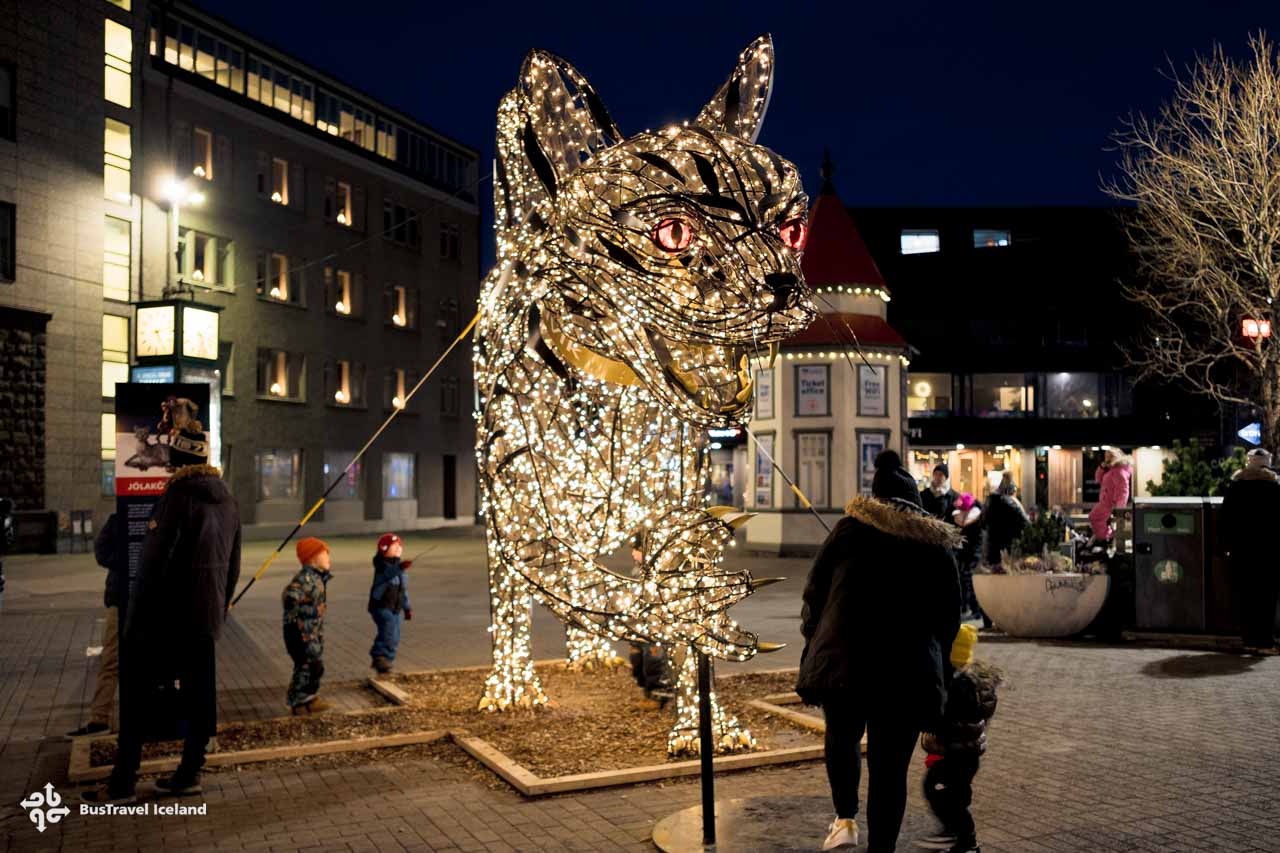
Why Visit Iceland at Christmas
Traveling to Iceland in December offers a rare chance to immerse yourself in authentic Icelandic Christmas traditions while enjoying the country at its most atmospheric. Visitors can explore festive Christmas markets, wander through luminous winter streets, and take advantage of excellent Northern Lights viewing conditions during the long nights. The contrast of Iceland’s cozy indoor culture—hot chocolate, holiday meals, geothermal pools—against the stark beauty of the Arctic landscape creates a uniquely inviting holiday experience. Adding to that, Reykjavík hosts one of Europe’s most energetic and unforgettable New Year’s Eve celebrations, making Iceland an ideal destination for anyone seeking both tradition and adventure during the holiday season.
──────────────────
Please read Iceland in December to learn more about Iceland.
──────────────────
Speaking Christmas in Iceland – Icelandic Key Phrases You Should Know
Christmas in Iceland isn’t just about lights, food, and folklore—it’s also a season rich with language, from greetings exchanged in candlelit homes to phrases echoing through markets and streets. Learning a few Icelandic expressions can help travelers connect with locals and feel the holiday spirit even more deeply. It would be a wonderful thing if you know how to say merry christmas in Icelandic.
Essential Holiday Greetings
- Gleðileg jól! – Merry Christmas!
- Gleðilegt nýtt ár! – Happy New Year!
- Gleðileg jól og farsælt komandi ár! – Merry Christmas and a prosperous New Year!
Festive Vocabulary
- Jólamarkaður – Christmas market
- Jólatré – Christmas tree
- Jólagjafir – Christmas presents
- Jólaljós – Christmas lights
- Jólasveinar – The Yule Lads
- Jólakötturinn – The Yule Cat
- Þorláksmessa – St. Þorlákur’s Day (December 23)
Dining & Everyday Phrases
- Er þetta jólamatseðillinn? – Is this the Christmas menu?
- Hvar get ég smakkað laufabrauð / hangikjöt? – Where can I try laufabrauð / smoked lamb?
- Takk fyrir! – Thank you!
- Hvað kostar þetta? – How much is this?
- Get ég fengið heitt kakó? – Can I get hot chocolate?
- Hvar er jólamarkaðurinn? – Where is the Christmas market?
Pronunciation Tip
- Gleðileg jól ≈ “GLEH-th-eh-leg yole”
Even attempting a simple greeting in Icelandic can earn smiles and warmth from locals. During the long, dark December days, speaking the language—even just a little—helps visitors feel part of Iceland’s unique holiday magic.
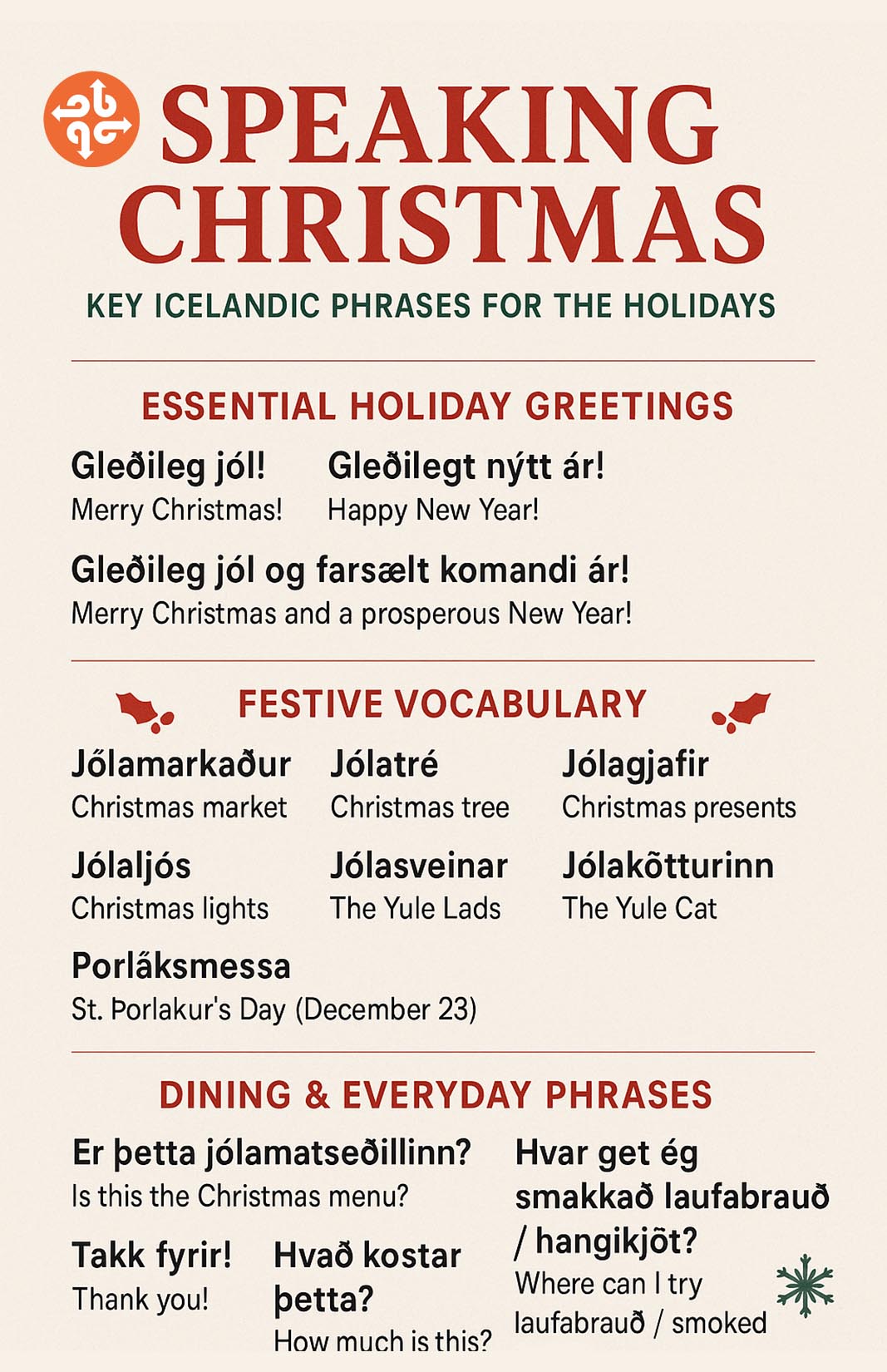
Itinerary: 7 Days in Iceland Over Christmas
Spending a week in Iceland during the festive season offers travelers the rare chance to experience how Iceland celebrates Christmas through folklore, food, winter adventures, and the warm, twinkling lights that brighten the long December nights. This seven-day Iceland Christmas vacation blends Reykjavík’s holiday ambience with the icy landscapes and cultural traditions that define how Icelanders celebrate Christmas today.
Day 1 – Arrival in Reykjavík
Your Christmas trip begins in downtown Reykjavík, where Laugavegur glows with twinkling lights and shop windows dressed for winter. After checking into your hotel, take an easy stroll through the city center to feel the festive spirit that fills the air. The Reykjavík Christmas Market at Hljómskálagarðurinn is the perfect place for your first taste of Iceland’s holiday atmosphere. End your evening with a cosy dinner—lamb stew or arctic char are classic Icelandic Christmas food staples—before heading out on an optional Northern Lights tour.
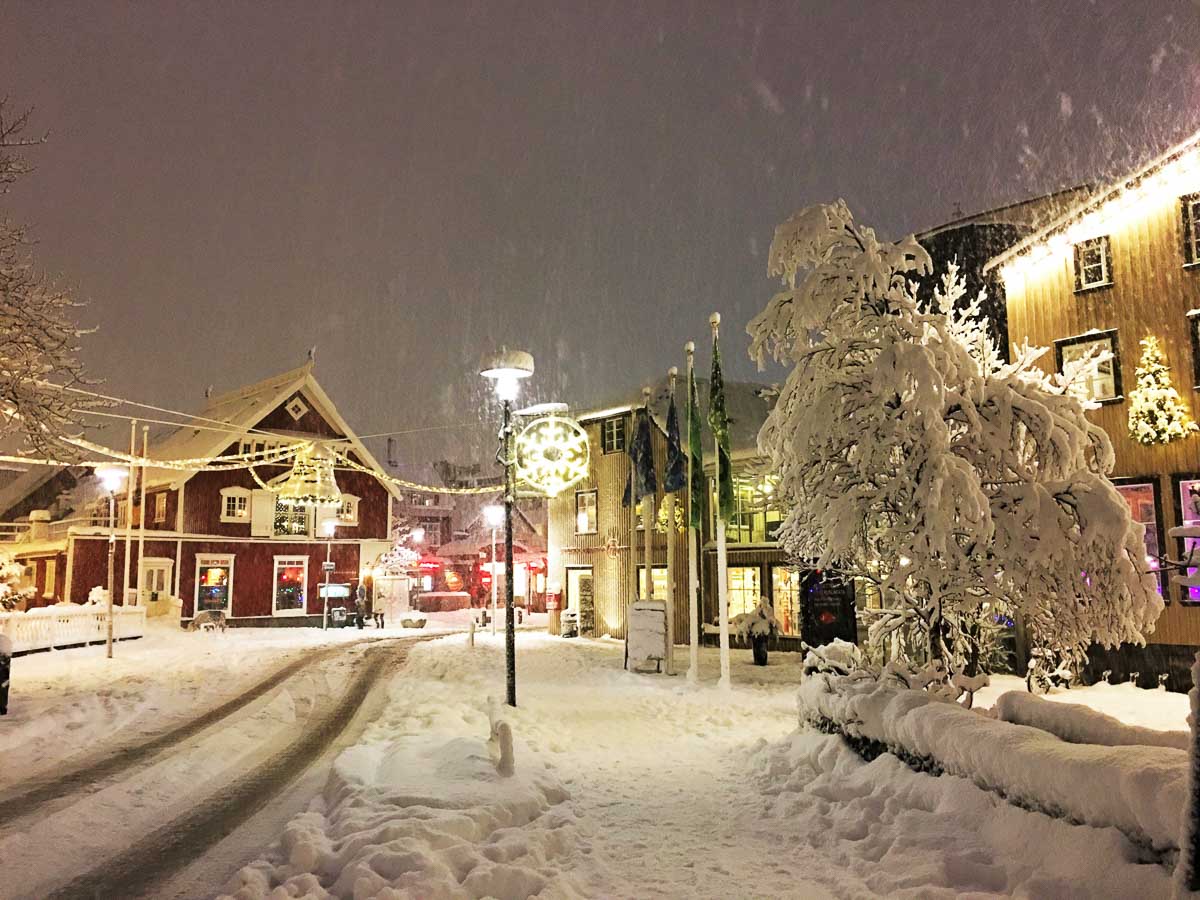
Day 2 – Reykjavík’s Holiday Culture
Begin the next day at Hallgrímskirkja, riding the tower elevator for panoramic views over a city wrapped in snow. Wander through the Old Harbor for pastries and coffee, then dive deeper into Iceland’s traditions at the National Museum of Iceland, learning how Icelanders celebrate Christmas in Reykjavik, Iceland through stories, crafts, and folklore. Seasonal displays at Perlan add to the magical mood. As daylight fades, unwind in one of Reykjavík’s geothermal pools—Sundhöllin for something traditional or Sky Lagoon for a modern oceanside experience.

Day 3 – Golden Circle Winter Adventure
A winter visit to the Golden Circle reveals the landscapes that define Iceland’s identity. Walk through the rift valley at Þingvellir National Park, watch steam erupt from the Geysir geothermal area, and feel the icy spray of Gullfoss waterfall. Snow transforms each stop into a glowing, frosty tableau. Return to Reykjavík for a festive dinner—many restaurants offer seasonal tasting menus featuring Icelandic Christmas food.
Day 4 – Þorláksmessa (December 23)
December 23, known as Þorláksmessa, is one of Reykjavík’s most cherished nights. Locals gather along Laugavegur for last-minute shopping and live music drifting from bars and cafés. Fermented skate is the tradition of the day—an adventurous piece of Icelandic Christmas culture and Icelandic traditional food culture. Whether you taste it or simply observe, the energy in the streets is unforgettable.
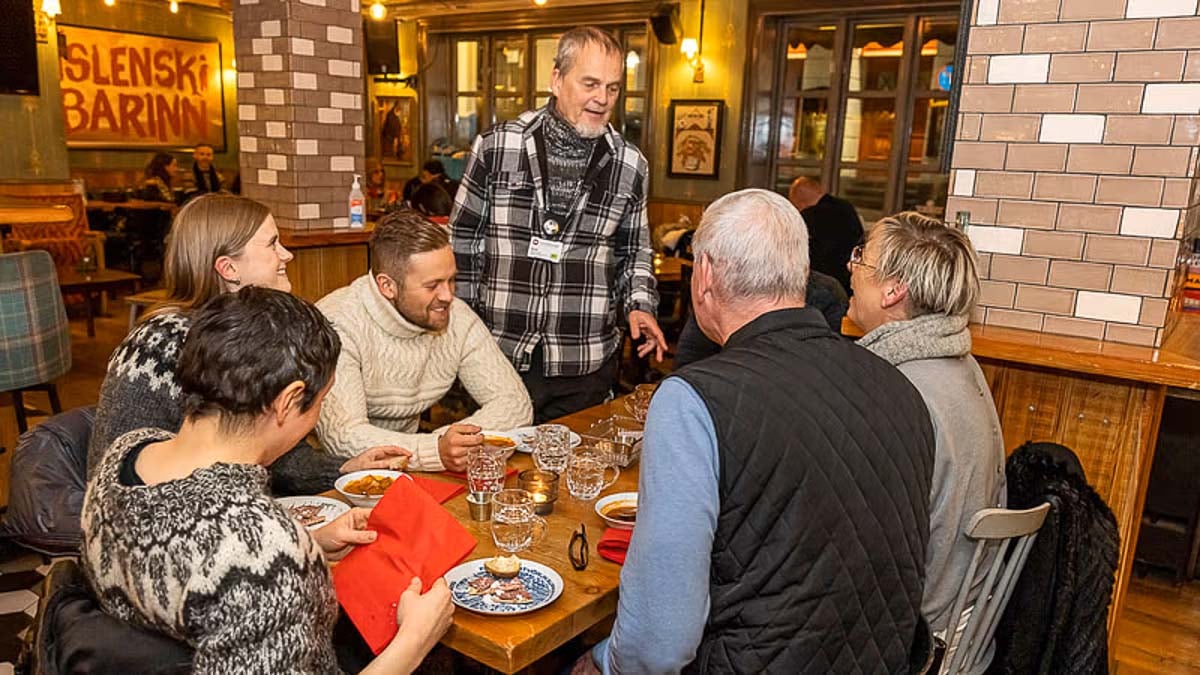
Day 5 – Christmas Eve
Christmas Eve is the heart of the Icelandic holiday. Start your morning with a quiet walk or a soak in a hot spring, then enjoy the slowing pace as shops close early. At exactly 6 p.m., church bells ring across Reykjavík, marking the official start of Christmas. Hotels and restaurants offer traditional Christmas Eve dinners, often followed by gift-giving and a gentle stroll to admire the city’s Christmas lights.
Many businesses may close on Christmas Eve, or operate only until around 12:00 pm. This makes it a great opportunity to plan a day trip outside Reykjavik, such as a visit to the Snæfellsnes Peninsula or the Jökulsárlón Glacier Lagoon.
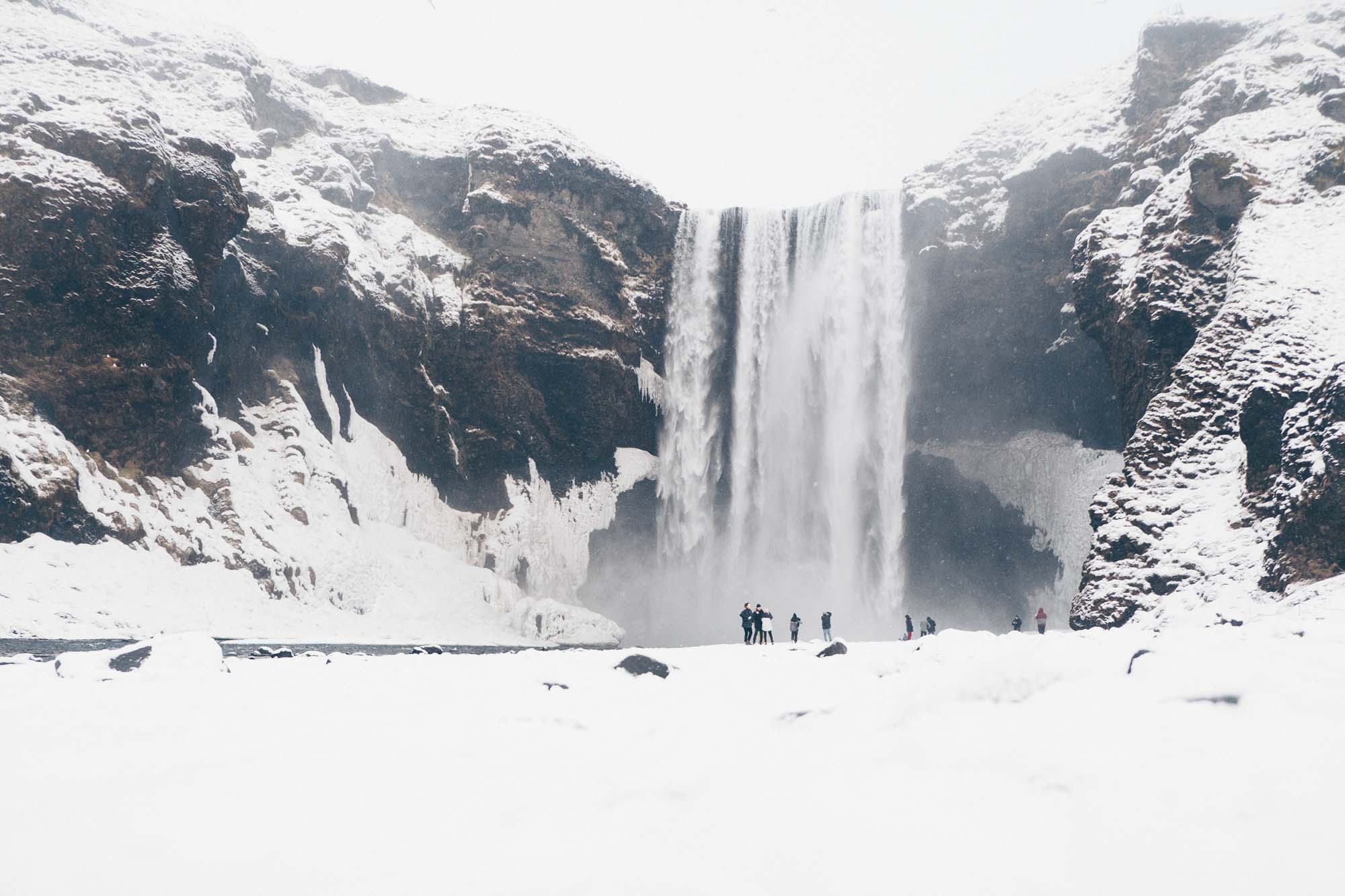
Day 6 – Christmas Day
Christmas Day remains still and peaceful across Iceland. Visitors often spend the morning in a geothermal spa such as the Blue Lagoon, Sky Lagoon, or Fontana. For scenic exploration, head to the Reykjanes Peninsula or walk the coastline at Seltjarnarnes. The mood is quiet, warm, and deeply rooted in how Icelanders celebrate Christmas at home.
Alternatively, you can spend Christmas Eve and Christmas Day on a 2-day tour of South Iceland, covering all the major highlights, including Seljalandsfoss and Skógafoss waterfalls, Reynisfjara black sand beach, and Jökulsárlón Glacier Lagoon. The tour also offers an optional add-on to explore the stunning crystal ice cave on Vatnajökull Glacier. This is a perfect way to immerse yourself in Iceland’s magical winter landscape over two unforgettable days.

Day 7 – New Year’s Eve or Post-Christmas Adventure
If your stay includes December 31, Reykjavík’s bonfires—held between 8 and 10 p.m.—are a must-see, followed by a midnight sky glittering with fireworks set off by locals. The city center then erupts into one of Europe’s most energetic parties.
If you prefer another adventure that takes you to see the stunning winter ice caves, whose shimmering blue interiors are among Iceland’s most breathtaking natural wonders.
This itinerary blends Reykjavík’s holiday spirit with winter adventures and local traditions.
